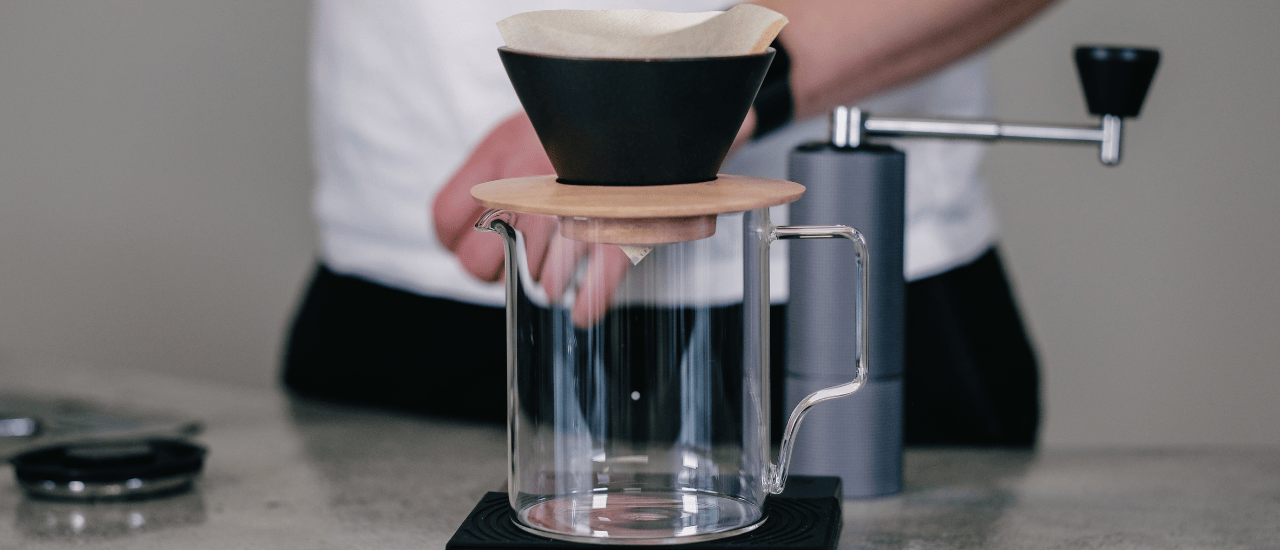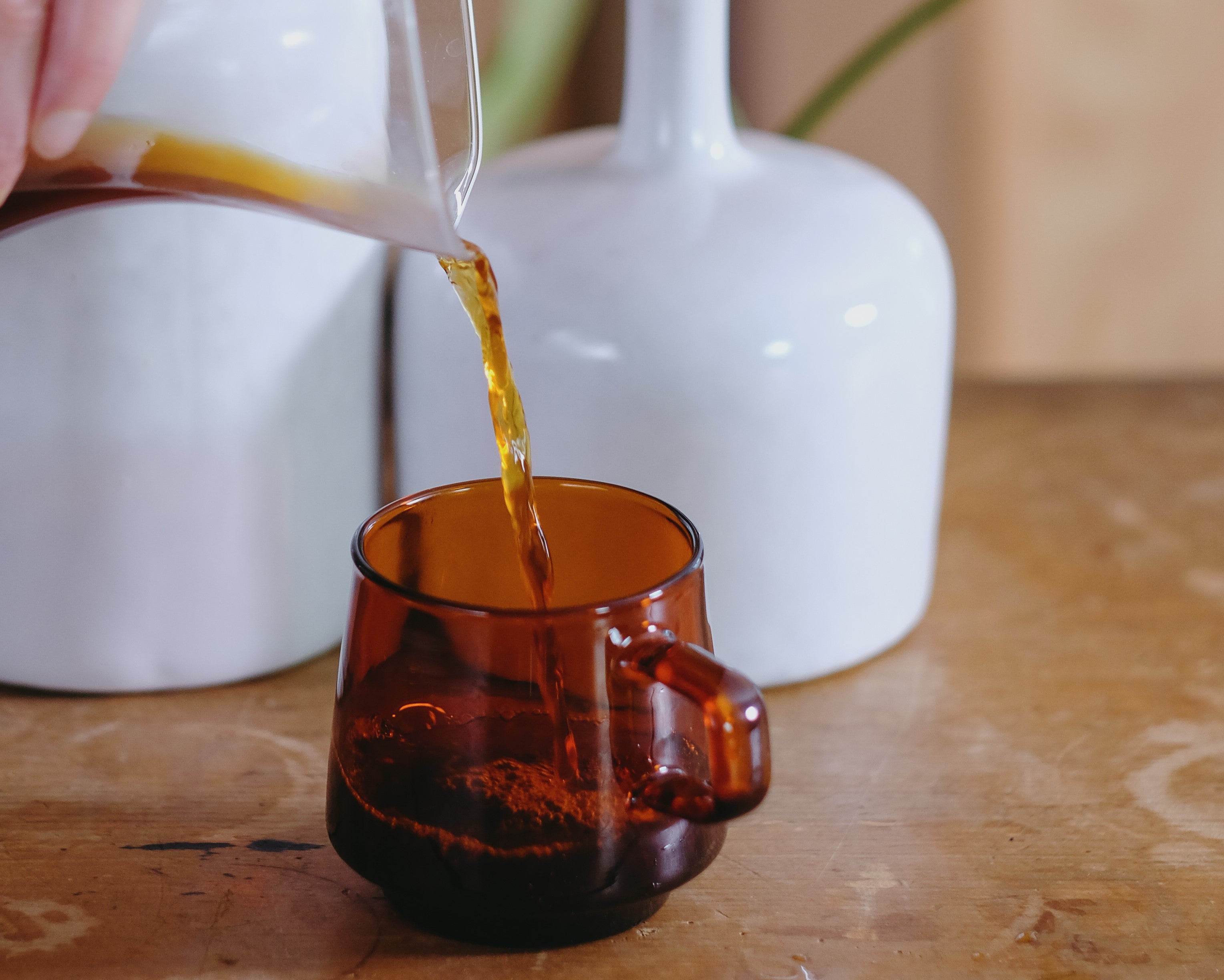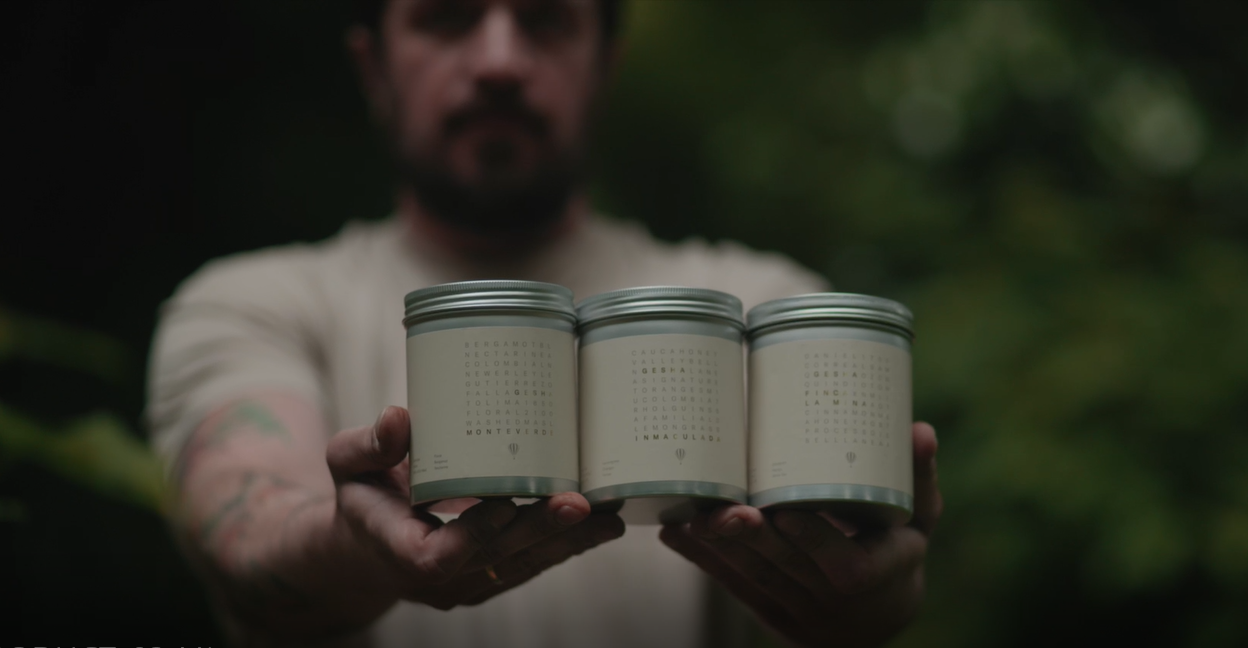
how to brew a great V60 at home (no experience needed)
So, you’ve decided to dive into the world of filter coffee. Great choice.
Previously, we've looked at the differences between filter and espresso. In this post, we’re getting hands-on with one of the most popular and approachable filter methods out there.
Although the V60 can look intimidating at first, with a little guidance anyone can brew a bright, clean, and delicious cup at home. No barista training needed.

the iconic cone shape of a V60
what is a V60?
The V60 is a cone-shaped dripper made by Hario, designed to sit on top of your cup or a server. You pop in a paper filter, add coffee grounds, and pour hot water over it in stages. Gravity does the rest.
The result? A light, nuanced cup that highlights the character of the coffee. If you enjoy exploring flavour notes and prefer a smoother brew, this is for you.
what you’ll need
Before you get started, gather your equipment:
- V60 cone dripper
- matching filters
- freshly ground filter coffee
- grinder (burr grinder recommended)
- kettle, ideally gooseneck for better control (but a standard kettle is fine to start)
- scales (optional, but helps with consistency)
- timer or phone stopwatch
- your favourite mug or server

scales give you precision with every brew
grind size
Grind size is very important for making a good V60 and your grinder will have a range of settings for V60 specifically.
For example, the recommended V60 setting on a traditional Comandante grinder is 20-30 clicks. For this Timemore grinder, it's 10-13 clicks.
At Bell Lane, we try to grind as fine as we possibly can. Once our brew becomes astringent or too dry, we know we've pushed it too far. From there, we usually bring it back a click or two.
Check the recommended settings for your grinder and play with each point in the range (and beyond) to see which setting works best for you.
coffee dose
It's also important to think about both water volume and coffee dose. A good starting ratio is 16:1. That means for every 1g of coffee, use 16g (or 16ml) of water. So, for a 20g coffee, use 320ml of water.
From there, you have a good base to experiment with the weight of coffee grounds and the volume of water. Adjust up or down depending on your preferences.
water matters
Use fresh water, ideally soft water, to avoid flavour loss. Although you'll see many recommendations for your water temperature to be around 92–96°C, at Bell Lane we brew just off the boil at 100°C.
This is because our lighter roast profile for filter coffees allows for a boiling hot brew.

variables, like water, influence your final cup
step-by-step guide
1. rinse & preheat
Place the filter paper into your V60 and rinse it with hot water. This removes any papery taste and preheats your dripper and mug or server. Discard the rinsed water.
2. add coffee grounds
Place your V60 on the mug or server, add your coffee grounds, and gently shake to level the bed.
3. pour 1: the bloom
Start your timer and pour just enough water to saturate all the grounds. About 30–50g. This allows the coffee to “bloom” as carbon dioxide is released, leading to better extraction. Wait for about 30–45 seconds.
3. pour 2: main pour(s)
Continue pouring in a slow, circular, or spiral motion. Start from the centre, work your way out and back in. Always aim for the coffee grounds and avoid pouring directly onto the filter.
You can do this in one or two pours until you reach your total water weight (250g). Aim to finish pouring by around 1:30–2:00 minutes.
4. let it drip
Allow the water to drain completely. Your total brew time should be around 2:30–3:00 minutes. If it’s running too fast, your grind may be too coarse. If it goes too slow, your grind is probably too fine.
5. the stir
Once your coffee is brewed, give it a quick swirl or a stir with a spoon. Why? When coffee is filter brewed, the heavier compounds and flavours sink to the bottom while the lighter aromas and flavours rise to the top. A quick swirl or stir will bring them all together for a more balanced cup.
Then? Sit back, relax, and enjoy.

swirl your fresh brew to integrate all the flavours
pro tips for better V60 brews
Don’t stress about perfection. Even small improvements (like a consistent grind) make a big difference.
Taste and adjust. Each coffee is different. Experiment with the variables like grinder, grind size, water temperature, and water volume to fit the settings that you enjoy most.
filter coffee
Try different coffees to see what you like (and don't like). Our filter collection is a great place to start and if you'd like a new coffee delivered to your door every month, explore our filter subscriptions. Each one is carefully selected and freshly roasted by our Head Roaster, Niko Sunko.


